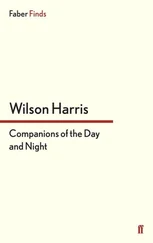A Companion to Motion Pictures and Public Value
Здесь есть возможность читать онлайн «A Companion to Motion Pictures and Public Value» — ознакомительный отрывок электронной книги совершенно бесплатно, а после прочтения отрывка купить полную версию. В некоторых случаях можно слушать аудио, скачать через торрент в формате fb2 и присутствует краткое содержание. Жанр: unrecognised, на английском языке. Описание произведения, (предисловие) а так же отзывы посетителей доступны на портале библиотеки ЛибКат.
- Название:A Companion to Motion Pictures and Public Value
- Автор:
- Жанр:
- Год:неизвестен
- ISBN:нет данных
- Рейтинг книги:3 / 5. Голосов: 1
-
Избранное:Добавить в избранное
- Отзывы:
-
Ваша оценка:
- 60
- 1
- 2
- 3
- 4
- 5
A Companion to Motion Pictures and Public Value: краткое содержание, описание и аннотация
Предлагаем к чтению аннотацию, описание, краткое содержание или предисловие (зависит от того, что написал сам автор книги «A Companion to Motion Pictures and Public Value»). Если вы не нашли необходимую информацию о книге — напишите в комментариях, мы постараемся отыскать её.
A Companion to Motion Pictures and Public Value
Companion
A Companion to Motion Pictures and Public Value
A Companion to Motion Pictures and Public Value — читать онлайн ознакомительный отрывок
Ниже представлен текст книги, разбитый по страницам. Система сохранения места последней прочитанной страницы, позволяет с удобством читать онлайн бесплатно книгу «A Companion to Motion Pictures and Public Value», без необходимости каждый раз заново искать на чём Вы остановились. Поставьте закладку, и сможете в любой момент перейти на страницу, на которой закончили чтение.
Интервал:
Закладка:
While we might assure ourselves that this is a woefully outdated perspective, aspects of it are clearly still with us, and the authors in this section make a number of points that bring its flaws into view. Perhaps most obviously, one might want to challenge the simplistic opposition between mass and high or folk culture. Khatereh Sheibani’s chapter on the aesthetics of Iranian cinema poses just such a challenge (albeit implicitly) by making a persuasive case that part of contemporary Iranian cinema’s value derives from its manifestation of aspects of Persian folk culture. One might also question the supposed necessity of an artwork offering an expression of an individual artist. In their chapter on distributed creativity in filmmaking practice, Karen Pearlman and John Sutton note how entrenched and pervasive this view remains today. From their interdisciplinary perspective, however, a conception of filmmaking as a collaborative enterprise with aims, intentions, and creativity distributed across a production team, is both more empirically accurate and conceptually sound. Moreover, Pearlman and Sutton argue for the centrality of the creative contributions by the sorts of “technicians” Macdonald seems to have in mind—in particular, editors. Paisley Livingston argues for a deflationary conception of art derived from Aristotle’s concept of techne , according to which art is a group of “purposeful human practices, each of which requires some level of acquired skill” (p. 31, this volume). Of course, if we think about art along these lines, there’s no reason to think that artmaking and commercial manufacture are incompatible; again, many mere “technicians” such as editors, camera operators, gaffers, sound recordists, etc. draw upon quite refined and specialized skill sets to work collaboratively toward a shared goal.
Still, other reasons have been proffered in defense of an opposition between commercial manufacture and bone fide art making. Another long-standing objection to motion pictures as art trades on the idea that it is not commercial manufacture per se that is the problem, but, more specifically, the mechanical nature of filmmaking and exhibition. As Rudolf Arnheim succinctly put it in his defense of film as art, the skeptic’s claim is, essentially: “Film cannot be art, for it does nothing but reproduce reality mechanically” ([1933] 1957, 8). Clearly there are connections between this objection to motion pictures as art and the one discussed above. Again, we see the implication that, by its nature, cinema prohibits the individual expression that is supposedly a sine qua non for art properly so-called. However, this objection is distinguished by its emphasis on the supposed fact that motion pictures are merely automatically created representations of reality.
According to the skeptic, motion pictures are basically like super-powered photocopiers: The interest we would properly take in a super-powered photocopy of a Frida Kahlo self-portrait would be in the aspects of the painting that the photocopy makes appreciable to us. It does not follow, however, that the photocopy is an artwork; the photocopy is merely an automatically generated reproduction of an artwork. Likewise, the skeptic might try to pump our intuitions by appealing to the case of video reproductions of theatrical performances. I can, for example, access a video recording of a performance of Yasmin Reza’s God of Carnage on YouTube. Clearly, however, the YouTube video of the performance of the play is not an artwork; it merely affords me access to the appreciable features of the performance, which is the artwork. (In fact, things are a little more complicated in this case because the performance is plausibly an artwork in its own right, distinct from the play.) According to this view, most cogently articulated by Roger Scruton ([1983] 2006), motion pictures are essentially like YouTube videos in just this sense: “if there is such a thing as a cinematic masterpiece it [is] because—like Wild Strawberries and La règle du jeu —it is in the first place a dramatic masterpiece” (19). 2
Underlying Scruton’s claim is what Noël Carroll has usefully called “the aesthetic interest argument” (2008, 18–20). The aesthetic interest argument holds that because motion pictures are merely automatically created reproductions, we don’t take an interest in them for their own sake; rather, what we are interested in for its own sake—what we are interested in aesthetically —is what motion pictures reproduce. The traditional response to this sort of argument is best exemplified by Arnheim’s Film as Art ([1933] 1957), which extensively documents the various ways in which filmmakers skilfully manipulate aspects of film form so as to elicit aesthetic interest in films themselves and not just what they depict. The chapters by Pearlman and Sutton and by Sheibani make a similar point in different ways: Pearlman and Sutton highlight the enormous scope of possibilities through which members of a production team must work before deciding on a single particular way to present a simple dialogue scene; Sheibani notes that a number of Iranian filmmakers of the 1980s and 1990s “were zooming in on the mundanity of everyday life” and simultaneously creating extraordinarily poetic works. How? “Zooming in” is an apt metaphor because it suggests the significance of the filmmakers’ perspective, their selection and framing of the quotidian. In this case, our aesthetic interest is not in the mundanity of everyday life, per se, but in how the filmmakers present it to us—what significance they imbue it with.
Here we come to the difficult matter of aesthetic value—a topic that both Livingston and Parsons discuss at length. Influenced by the philosopher C.I. Lewis, Livingston conceives of aesthetic value (roughly speaking and with some important qualifications) as “an object’s power to occasion intrinsically valued experience, where this experience is not based on a moral or possessive attitude” (p. 39, this volume). So understood, aesthetic value is but one value that an artwork might have, and it is a value that might be found in many other contexts—most notably the environment. In his chapter, Parsons explores the historical resistance to the idea that the aesthetic value of the natural environment can be appreciated through motion pictures, and he challenges such scepticism regarding what he calls “the mediated appreciation of nature.” As Parsons notes, scepticism about the mediated appreciation of nature seems especially odd in light of Scruton’s aesthetic interest argument, according to which photographs and motion pictures should provide the ideal means for appreciating nature since we supposedly only take an aesthetic interest in what we see in them. Plausibly, however, it is precisely the objections to Scruton’s argument based in extensive documentation of photographs’ and motion pictures’ capacity for creative interpretation (and even manipulation) of what they depict that raises doubts about their ability to accurately represent nature in a way that is sufficient for our aesthetic appreciation of it.
As a final remark, it is worth pointing out that a well-entrenched view of aesthetic value adds to Livingston’s neo-Lewisian characterization a quality of “subjective universality.” That is, aesthetic value is, following Kant, typically thought to be partly defined by a subjective judgment that nevertheless claims universal assent. The idea of universally held judgments of taste or values has fallen on hard times. In recent years, “to each their own” seems not just to be received wisdom, but a kind of politically virtuous view. The problem, however, is that it makes aesthetic value something that is private and not shared. In contrast, it is the claim to universal assent of aesthetic judgments and aesthetic value that makes aesthetic value something that is shared and available to all—a public value.
Читать дальшеИнтервал:
Закладка:
Похожие книги на «A Companion to Motion Pictures and Public Value»
Представляем Вашему вниманию похожие книги на «A Companion to Motion Pictures and Public Value» списком для выбора. Мы отобрали схожую по названию и смыслу литературу в надежде предоставить читателям больше вариантов отыскать новые, интересные, ещё непрочитанные произведения.
Обсуждение, отзывы о книге «A Companion to Motion Pictures and Public Value» и просто собственные мнения читателей. Оставьте ваши комментарии, напишите, что Вы думаете о произведении, его смысле или главных героях. Укажите что конкретно понравилось, а что нет, и почему Вы так считаете.












